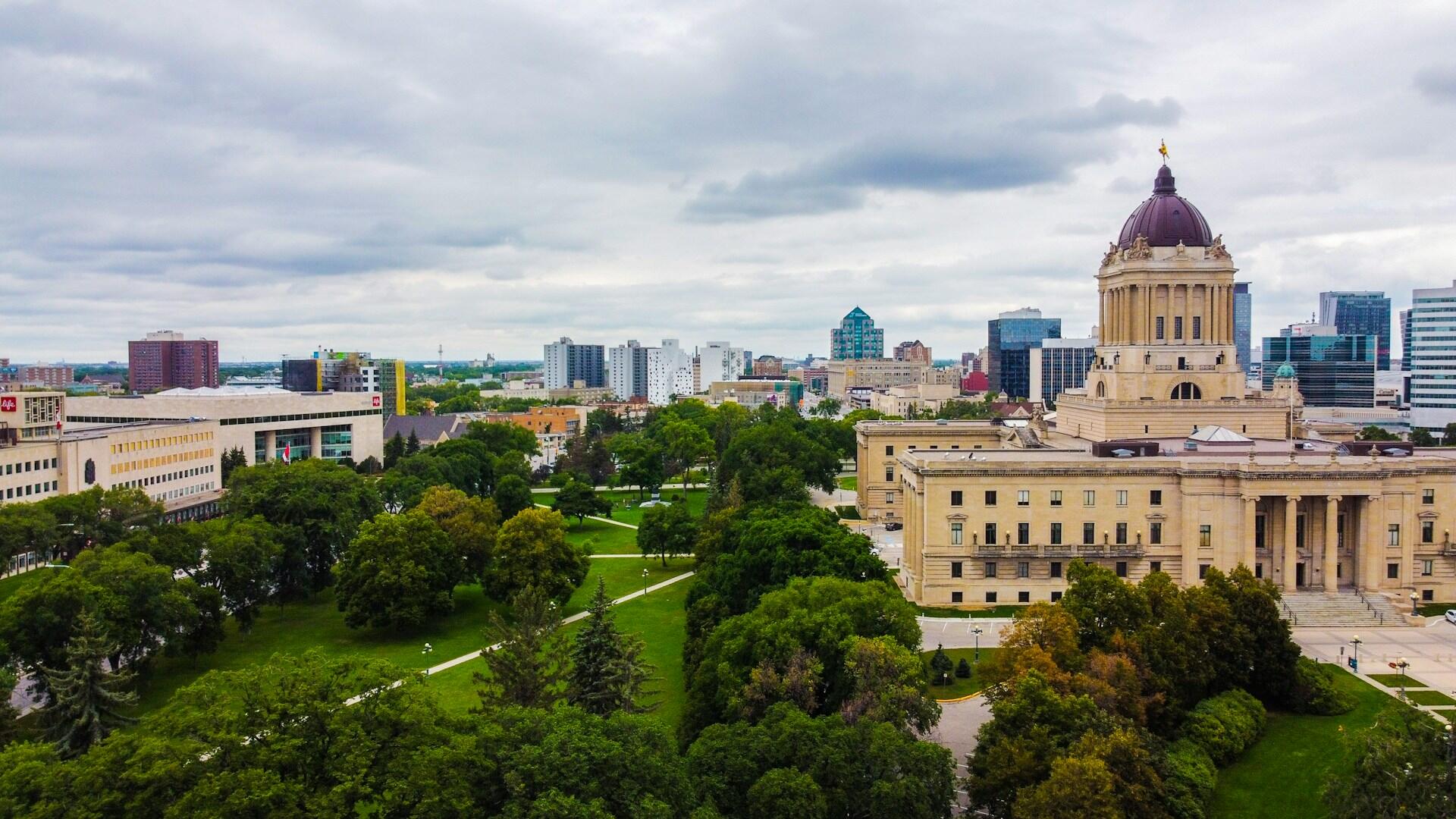What comes to your mind whenever we talk about the Canadian government?
The face of the Prime Minister, the federal elections held every once in four years? An experienced politics educator will tell you that it's deeper than that, first take a look at how responsibility is distributed:
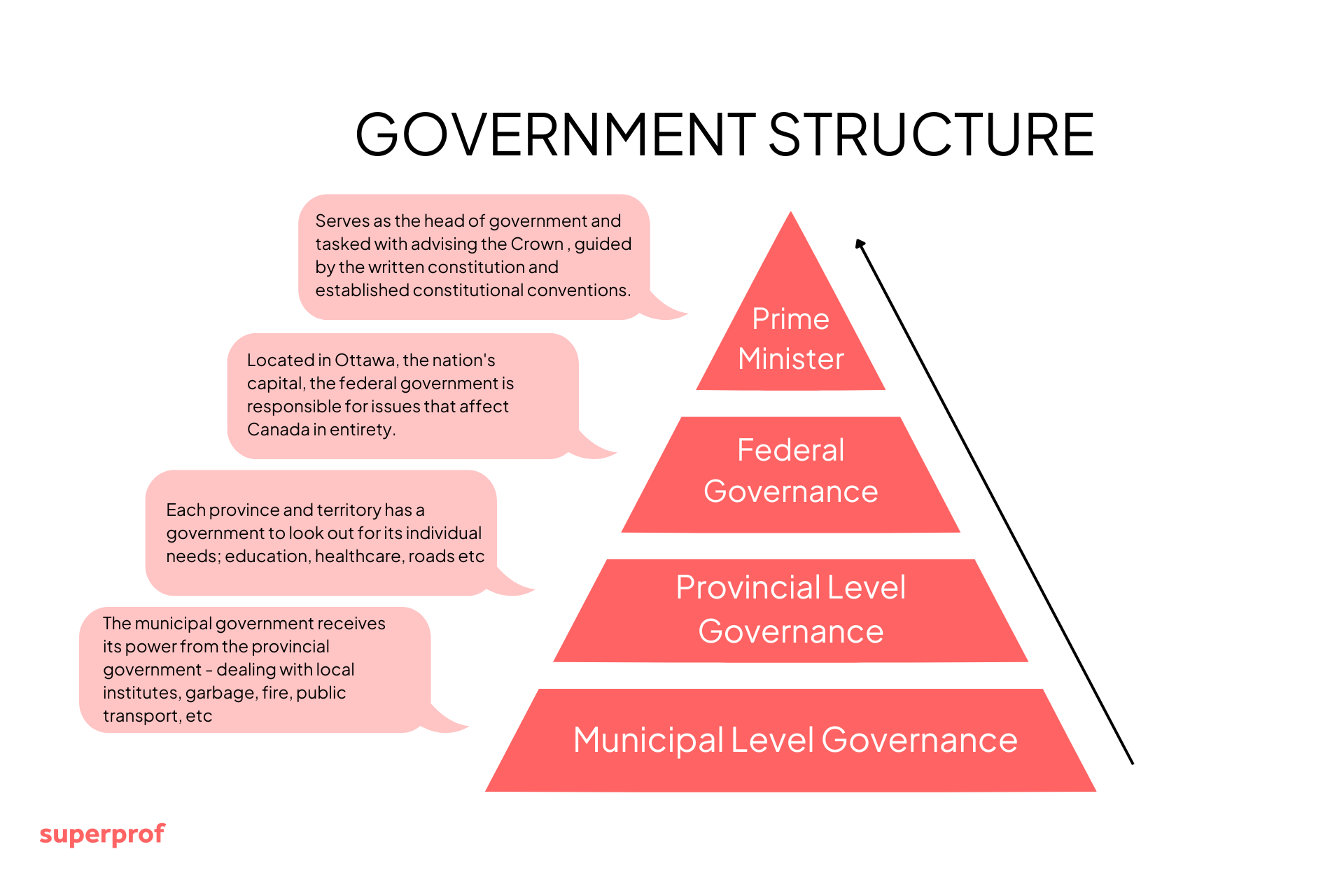

🍁What is Canada's System of Government?
Firstly, Canada is a country which practices the ideology of democracy — a form of governance that depends on the power of the people. Under the principles of democracy, Canada forms different levels of government to share power within the entire country and the various provinces and territories as a federal state (federalism).
If we continue to break down each province in Canada, many cities in the provinces have their own government too. For instance, the province of Ontario has its provincial government that decides its own province policies which is separated from the federal government, while Toronto, a major city in Ontario has its own city government.
You might wonder who has the final say when it comes to the different levels of government in the country. The answer lies in the highest system of government in Canada which is a constitutional monarchy, combined with parliamentary democracy.
📜 Constitution
To ensure the effectiveness of how the system of Canadian government works, the country adheres to the Constitution of Canada. The document defines the power and limits of the government — what can they do vs what they cannot do.
The two main pillars of the Canadian Constitution are the creation of the Canadian Federation in 1867 and the patriation of the Constitution in 1982 (signed by the late Queen Elizabeth), which gave Canada full control over its laws and added the Charter of Rights and Freedoms.
The Constitution also outlines the powers of the three branches under Canada's system of government:
👑 Monarchy
While this means Canada has a monarch as a head of state, who is currently King Charles III of Great Britain, the King only holds symbolic power but no actual political power in the country's government. Until today, Canada's laws have been symbolically made in the monarch's name.
As a representative of the monarch, the Governor General is appointed by the Canadian government to perform symbolic duties in the country such as dissolving the parliament and giving Royal Assent. The present Governor-General is Mary Simon.
A ceremonial step is where a monarch (king or queen) approves a bill to become a law after the bill is discussed in Parliament, which is common in countries that practice constitutional monarchy.
🏛 Parliament
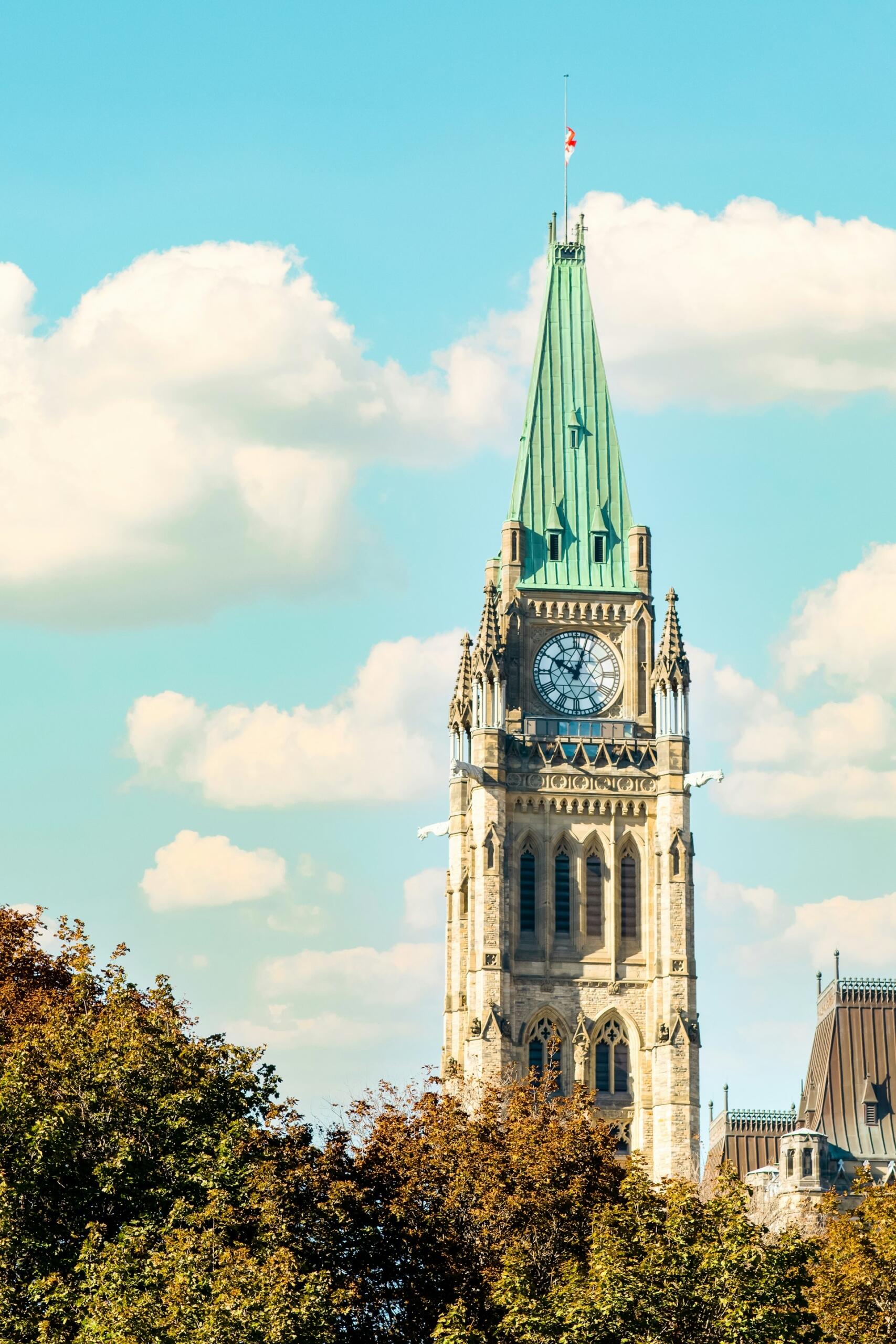
The real political power of Canada is fully demonstrated by the parliamentary system, where elected representatives from different parts of the country make decisions about Canada's laws — debating and approving them.
The parliament is divided into two chambers: the House of Commons, which is made up of Members of Representatives (MPs) elected from different Canadian political parties and the Senate which the Prime Minister appoints.
🏛️Branches of Government 1: Legislative Branch
The legislative branch of Canada consists of the Crown (Governor General), the House of Commons and the Senate which both make up the Parliament. As of this time of writing, The House of Commons has up to 338 seats while the Senate has a total of 105 seats.
Here is the legislative process of how a law is formed in Canada.
First step
An MP or senator introduce a bill in Parliament either in the House of Commons or Senate.
Second step
The MPs or senators will debate on the relevance of the bill. Votes will be taken to determine if more studies are needed.
Third step
If the bill is passed, it will be sent to a committee for further examination and improvement.
Fourth step
The reviewed and amended bill is then debated again in Parliament. A vote is taken to pass the bill.
Fifth step
Once the bill is passed in one house, it moves to the other chamber to repeat the process.
Final step
When the bill is passed in both chambers, it will be sent to the Governor General for Royal Assent to become an official Canadian law.
Having said that, there are several differences between the House of Commons and the Senate in terms of their structure, function, members, and power.
👉House of Commons
- Elected by Canadian citizens during federal elections held every four years
- MPs serve until their four-year term is up unless they are reelected.
- Representation is based on population (based on distribution across electoral districts)
- Led by the Speaker of the House among the elected MPs
👉Senate
- Appointed by the Governor General on the advice of the Prime Minister
- Once appointed, senators can serve until the age of 75.
- Representation is based on region (provinces and territories)
- Led by the Speaker of the Senate — appointed by the Governor General on the advice of the Prime Minister

👨🏻💼Branches of Government 2: Executive Branch
The executive branch of Canada comprises the Monarch — represented by the Governor General, the Prime Minister, and the Cabinet. Its primary role is to implement the laws that have been approved by the legislative branch for the benefit of all Canadians.
Remember how we talked about the monarch being Canada's Head of State earlier?
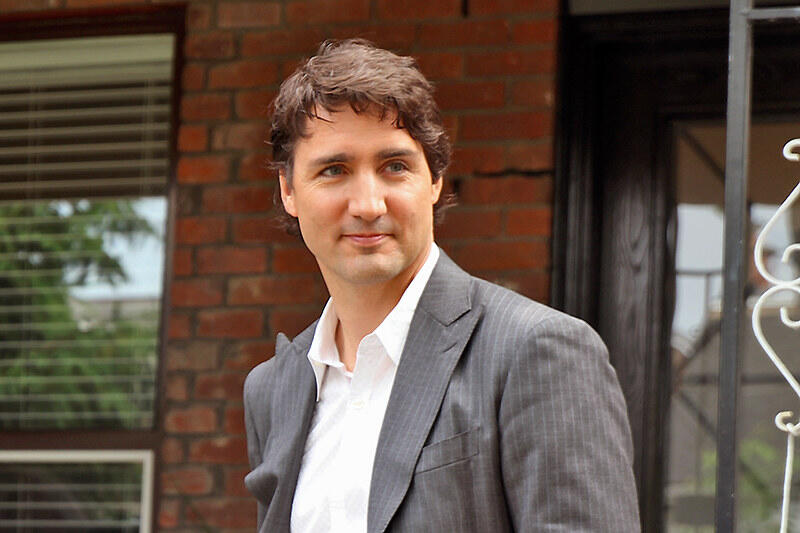
Well, the Prime Minister is Canada's Head of Government.
The position is selected from the leader of the political party with the most seats in the House of Commons during the year of election.
For example, the 23rd Prime Minister of Canada, Justin Trudeau is also the head of the Liberal Party. As the primary leader of the country when it comes to making domestic and international policies, the Prime Minister will appoint a team known as the Cabinet to oversee different government departments on the federal level.
Important note: The Cabinet ministry portfolios can be reshuffled and adjusted according to the Prime Minister's discretion. Some cabinet ministers may even hold multiple portfolios at the same time.
⚖️Branches of Government 3: Judicial Branch
Now let's talk about the judicial branch which centres around different levels of courts — where Canadian law is interpreted and applied. Unlike the interrelated relationship between the legislative and executive branches, the judiciary branch in Canada operates independently from both the legislative and executive branches.
The main structure of the Canadian judicial branch is as follows:
- Provincial and Territorial Courts: Lower courts, superior courts, and appeal courts — 3 levels of court system which deal with civil and criminal offences. Nunavut is the only territory in Canada which has only one level of court system due to its small population.
- The Federal Court System: The federal court, the tax court, the military court and the federal court of appeal — overseeing every government-related legal dispute.
- Supreme Court of Canada: The highest and final court of appeal in the country.
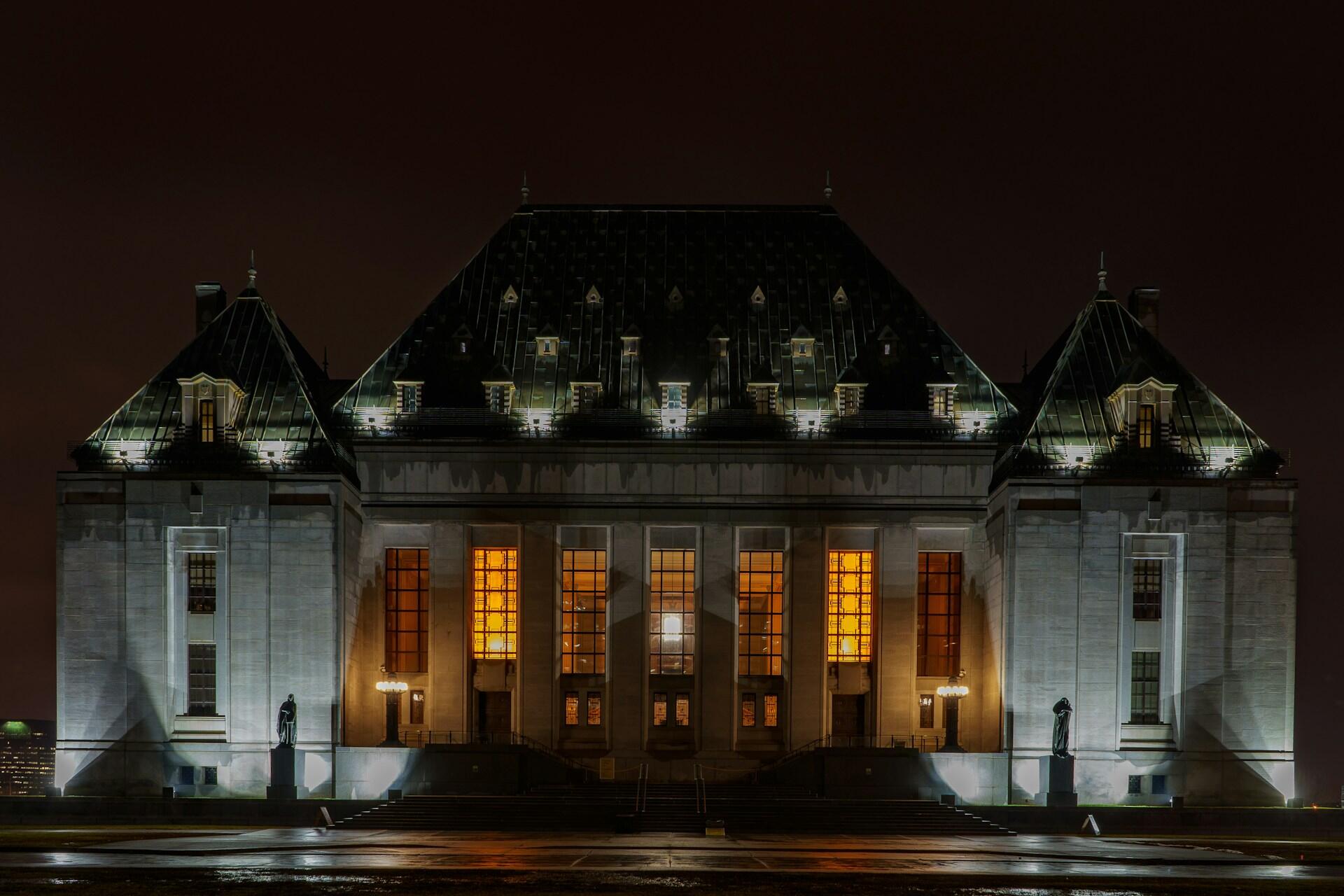
➗Divisions of Power — Federal & Provinces Jurisdiction
The key that binds the country's system of government and the three main branches of government is none other than the concept of divisions of power as detailed in Canada's Constitution.
As mentioned earlier, Canada is a federal state that operates on many government levels. Here are some examples of general areas of power under the jurisdiction at the federal and provincial levels.
Official languages
Citizenship
Foreign affairs
National defence
Banking
Local hospitals
Properties
School boards
Direct taxation
Celebration of marriage
Additionally, this implies that there are different areas of jurisdiction at the federal, provincial, and even city levels for the three government branches too.
Parliament for the federal government, Legislative Assemblies for provinces, and Municipal Councils for local cities.
The key leader of the federal government is the Prime Minister, Premiers for the provinces, and Mayors for the local cities.
Apart from the federal court, there are more specializations at the provincial level like Indigenous Courts and youth courts.
Interested to learn more about the history of Canada's government and dive deep into its overall political structure? Head to Superprof Canada to connect with an experienced politics tutor near you. Depending on your learning purpose, whether it's for your university degree or for the sake of general knowledge, you can enjoy a personalised tutoring experience whenever and wherever you want.
Indicate your desired subject (politics) and current location (Ontario) or preferred learning mode (physical/online lessons) to start browsing a wide selection of politics tutors. Take your time to review the tutor's personal details such as tutoring experience, tutoring specialization, education qualification, past students' reviews and also hourly rates.

Once you have decided on the tutor, you can contact them directly via the messaging feature to book your first lesson. Most Superprof tutors offer their first lesson for free so don't miss out on this amazing opportunity!

